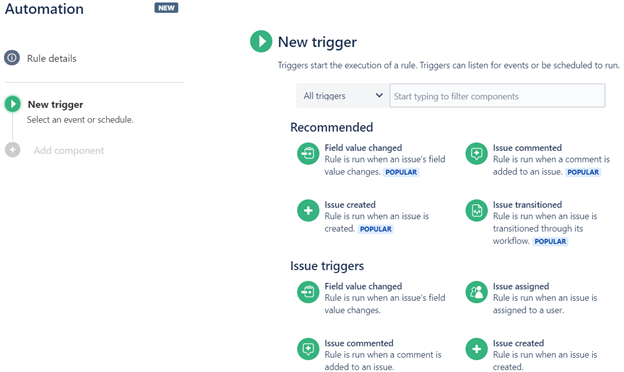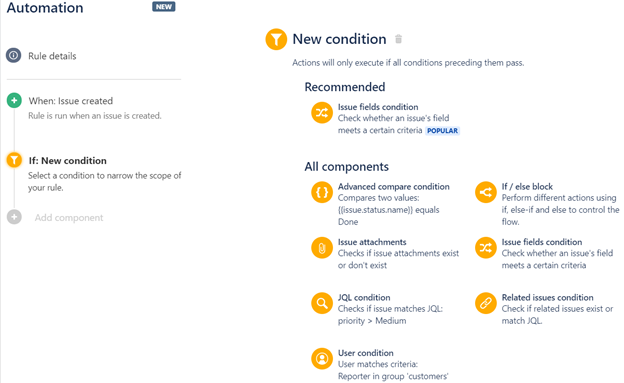Overview
Automation for Jira (AFJ), comes as a native feature for Jira Cloud while for the Server version, it can be acquired through the Atlassian Marketplace. The original idea already existed in the Jira Service Desk but with limited options and possibilities.
But the story didn’t end there, the Australian Start-up Code Barrel founded by two former Atlassian engineers spotted the opportunity and developed a new Automation engine which later on was acquired in October 2019 by Atlassian.
“We started Code Barrel in 2016. Although the first app we released didn’t really take the world by storm, we knew almost immediately when we released Automation for Jira that we had built something that solves real problems for people.” Mr. Knecht wrote in his blog.
What does Automation for Jira offer?
It empowers users to set up their own set of rules based on specific events in Jira, whether they include resolving an old issue, notifying project managers when stories in the epic have been closed, or automating the entire process for Dev, UAT, or QA team in Jira, with only a few clicks. Simply said, Automation for Jira offers endless possibilities, and component combinations that can solve business equations in minutes instead of hours.
Simple “no-code” feature
In a nutshell, it’s a UI no-code block builder. It’s just vertically dragging and dropping components that are linked together making an automated process, solving endless use cases without additional complexity in its structure.
“We can even use the analogy of using Lego blocks, no matter what kind of rule you are building the idea is that you always use the same blocks just put them together in lots of different ways” John McKiernan Automation for Jira 101: Tips & Tricks to get started!
Where do you start? Application Level Rules
In the Admin panel, we can see types of rules segregation, by default, we have three-level structures: All, Project, and Global Rules but we can add additional levels if the organization requires to.
Don’t hesitate to use Global rules, they can be quite effective and efficient.

Be Inspired! Build your own custom rules
Rules contain at least three core components: Triggers, Conditions, and what’s going to execute the rule an “Action”.
Triggers or when the rule becomes active:
Triggers are used to start the execution of the rules. They activate the rule on a specific event, the most common trigger is when an issue is created, commented or a specific field value is changed.

Conditions:
With conditions, we check if certain issue criteria are met in order to continue performing the action. Conditions are optional, rules don’t necessarily need to have a predefined condition.
Besides basic conditions when the issue status has been changed, we can set up a JQL condition that will check if the issue matches the given JQL query. In addition, there is an advanced compare condition using smart values and regular expressions.

Actions:
Actions are the actual doers, when the rule comes to this step of the process only then the changes are being made to the targeted issue, such as changing the assignee, sending notifications, or even creating additional tasks or sub-tasks.
Set Rule details:
In this section, a few details can be set, and the scope of the rule can be defined – a single, multiple, all, or project of a specified type. Optionally, rules can be set to be triggered when another rule has been executed. Declaring a rule owner for each rule is a must. The rule owner should have relevant project permissions so the rule can be triggered.
Tips and Tricks to help you get along with AFJ
- Set a unique name and describe your rule with more details in the rule’s description box
- Test your rules in Rule Playground, it is a safe environment to create and customize your own rules without breaking anything. https://docs.automationforjira.com/rule-playground/
- Give your team a heads-up, and let them know about the active rules in their projects
- Detect any misconfiguration by setting the notify on error option in Rule details
- Audit logs give you the extra ability to trace back errors and configuration changes
Conclusion
With Automation for Jira, we can save a significant amount of time by eliminating the need to carry out all manual and recurring processes and tasks in a project that can be tedious on occasion.
We strongly believe AFJ has eminent advantages and overthrows the built-in Jira Service Desk automation platform just for the fact that is supported by all project types. It could be integrated with out-of-the-box messaging platforms (Slack, Twilio, Microsoft Teams), and other third-party applications Jenkins, GitHub, and GitLab. That is a huge help for all teams to automate their processes and enables you to capture the bigger picture of the business requirements.
“Automation” in organizations is a stepping stone that provides value today and progressively leans towards the future of work.

